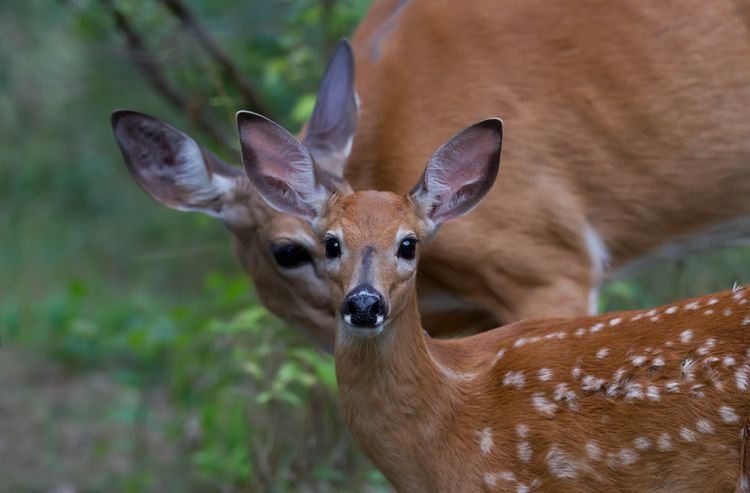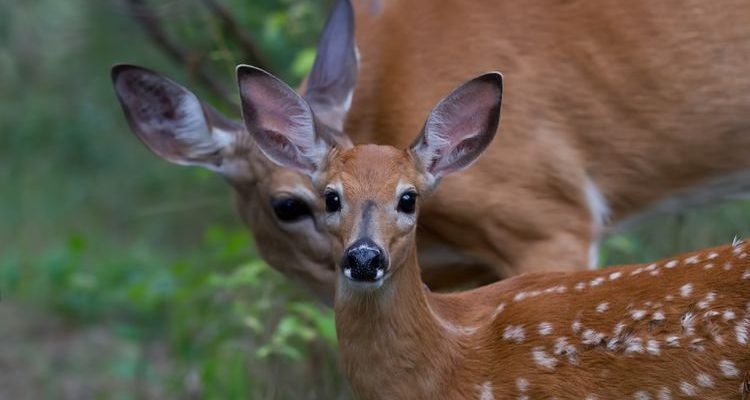
Let’s take a moment to explore the world of the white-tailed deer. You might think of them as just another animal in the forest, but they are much more than that. From their incredible adaptability to their fascinating social structures, there’s a lot to uncover. So, if you’ve ever been curious about these lovely creatures or just want to impress your friends with some fun facts at your next gathering, you’re in the right place.
1. A Widespread Presence
You might be surprised to learn that white-tailed deer are one of the most widely distributed mammals in North America. They can be found almost everywhere in the U.S. and parts of Canada, stretching all the way to Central America. They thrive in various habitats, from dense forests and wetlands to scrublands and even urban areas. Whether you live in a bustling city or a quiet countryside, there’s a good chance these deer are nearby.
Their adaptability is remarkable. White-tailed deer can adjust their behaviors based on their environment. For instance, in urban settings, they might forage at night when fewer cars are on the roads. This ability to adapt has helped them not just survive but flourish in diverse situations, making them truly fascinating members of North America’s wildlife.
2. Distinctive Features
What sets the white-tailed deer apart from other deer species? For starters, their namesake feature—the white underside of their tails—is a dead giveaway! When startled, they raise their tails to reveal this distinctive white flash, which acts as a warning signal to other deer. It’s like a little traffic signal in the wild!
In terms of appearance, white-tailed deer have a reddish-brown coat in the summer, which turns greyish-brown in winter. This seasonal change helps them blend into their environment, offering them protection from predators. Their large ears are not just for show—they provide excellent hearing, allowing them to detect even the slightest rustle in the bushes.
3. Social Creatures
Here’s the thing: white-tailed deer are social animals. They tend to live in groups, especially females and their young. These groups, often called “herds,” can vary in size, sometimes consisting of just a few deer or, during winter months, swelling to larger sizes when food is scarce.
Male deer, or bucks, are a different story. They are usually solitary or form small bachelor groups. This behavior changes during mating season, known as the rut, when bucks become more aggressive and compete for the attention of does (female deer). So, if you’ve ever thought you saw a deer party in the woods during the fall, you weren’t imagining it!
4. An Impressive Sense of Smell
You might be wondering how these deer navigate their environment so effectively. One of their key tools? Their incredible sense of smell. White-tailed deer have a highly developed olfactory system, allowing them to detect scents from miles away.
This sharp sense helps them find food and avoid predators. It’s said that their sense of smell is about 20 times better than that of humans! Imagine walking through a forest filled with different smells—deer can pick out specific scents, such as the presence of a predator, with ease. This ability gives them a significant advantage in the wild.
5. Diet and Foraging
When it comes to food, white-tailed deer are herbivores, munching on a wide range of plants. Their diet primarily consists of leaves, fruits, nuts, and grasses. In the fall, acorns are a favorite treat. Honestly, can you imagine a buffet that includes a smorgasbord of nature’s delights?
Deer are also known for their unique foraging habits. They have a four-chambered stomach, which allows them to digest tough plant material efficiently. They often browse and graze in the evening or early morning when it’s cooler and less busy. Watching a deer nibble on some grass can be a peaceful experience. Just remember to keep your distance; they can be skittish around humans.
6. The Art of Communication
You might assume that deer just stay quiet, but they actually communicate in several ways! White-tailed deer use a range of vocalizations, body language, and scents to convey messages. For example, they may grunt or bleat to signal distress or call for their young.
Body language is also crucial. They’ll often stomp their feet to warn other deer of danger or raise their tails to express alarm. These subtle cues are vital for their survival, especially in large herds where knowing what’s happening around you is essential.
7. Lifespan and Predators
In the wild, white-tailed deer typically live between 4 to 5 years, though some can reach up to 10 or even 15 years in protected environments. However, their lifespan can drastically reduce due to threats from predators like coyotes, wolves, and humans. Hunting is a significant factor in their population control, but it’s also a part of wildlife management.
Nature isn’t always kind, and the delicate balance of predator and prey plays a crucial role in maintaining healthy ecosystems. It’s a reminder that every creature has its place in the food web, whether they’re standing proud in the forest or sneaking away from danger.
8. Unique Antler Development
Have you ever marveled at the impressive antlers of a buck? Each year, male white-tailed deer grow and shed these magnificent structures. Antlers are made of bone and are covered in a velvety skin while they grow. During the summer months, you’ll find bucks with their full-grown antlers, which they typically shed in late winter or early spring.
The size and shape of antlers vary based on factors like age, genetics, and nutrition. Bucks often use their antlers to establish dominance during the rut, engaging in fierce battles with other males. It’s a sight to behold, making nature’s competition a thrilling spectacle.
9. Conservation Status
The white-tailed deer population has seen dramatic changes over the years, mainly due to habitat loss and hunting. Thankfully, conservation efforts have helped bring these populations back from the brink. Today, they are considered a success story in wildlife conservation.
Many organizations work to protect their habitats, ensuring future generations can enjoy watching these graceful animals. You might even notice them more frequently in areas where conservation efforts have taken place, showcasing the positive impact of wildlife management.
10. Cultural Significance
White-tailed deer hold a considerable place in various cultures, often symbolizing grace, strength, and renewal. In many Native American traditions, they are viewed as sacred animals. Deer are also popular in literature and art, representing themes of beauty and harmony with nature.
Their significance extends to hunting traditions, where they play a central role in outdoor activities for many communities. The connection between humans and white-tailed deer fosters a deeper appreciation for nature and the importance of preserving wildlife.
In conclusion, white-tailed deer are truly fascinating creatures with a blend of unique traits and stories that connect them to the fabric of our natural world. Next time you spot one, take a moment to appreciate all that makes these animals special. From their adaptability to their cultural significance, there’s always more to learn about these graceful beings and their lives in the wild.

